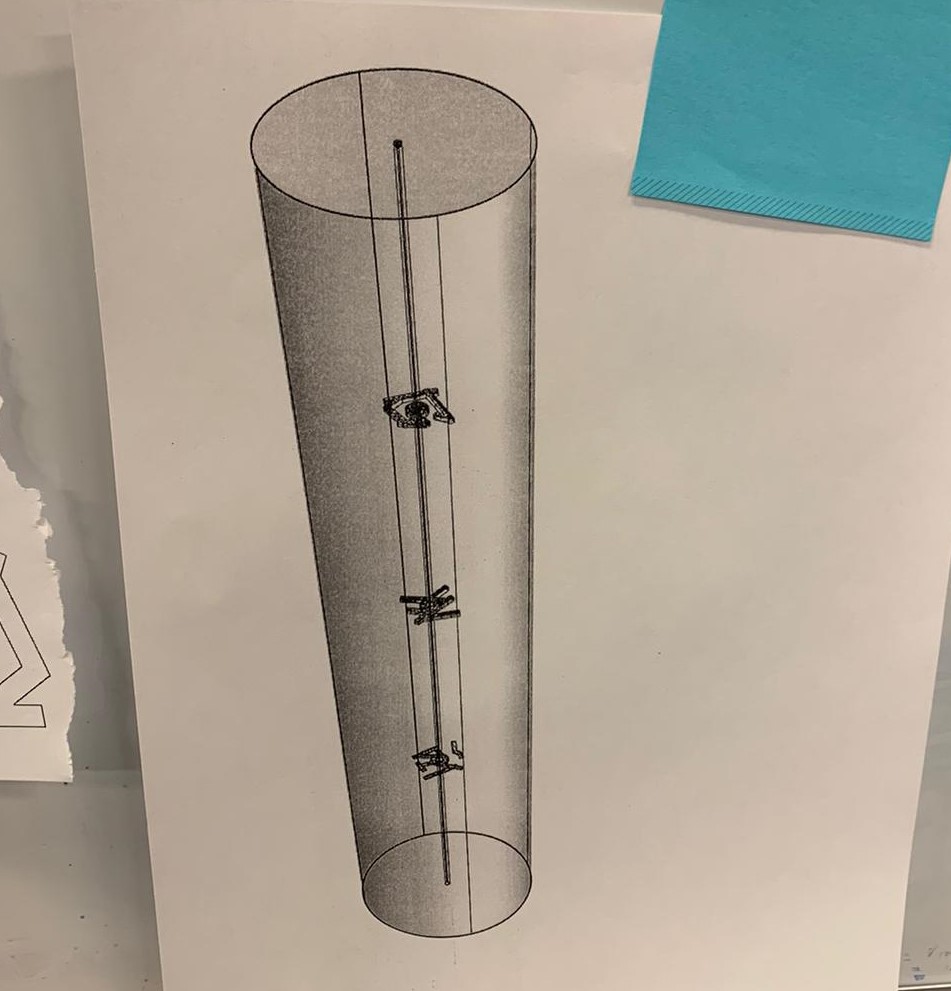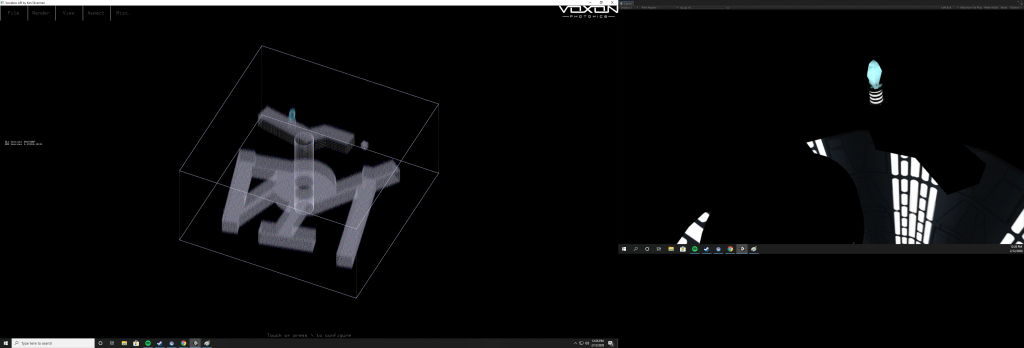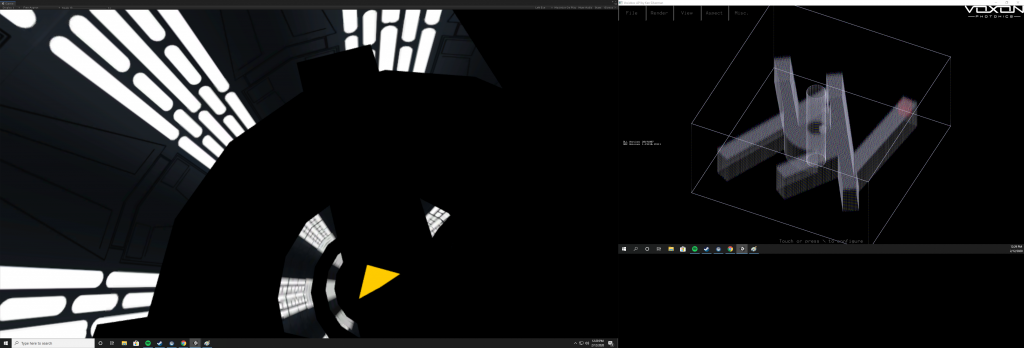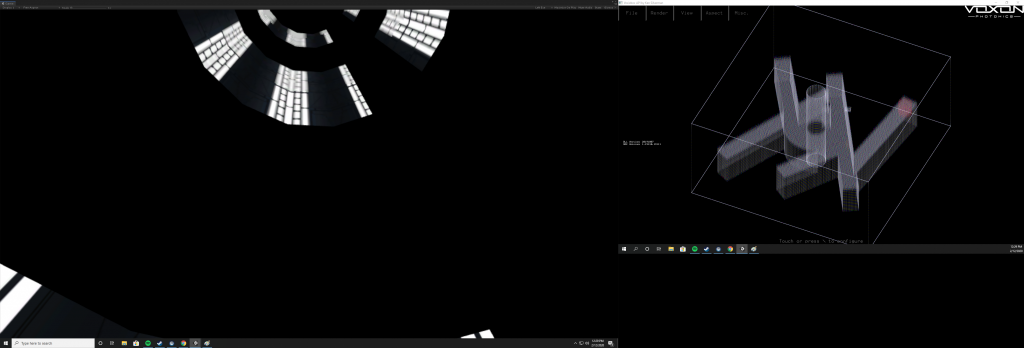One of the key strengths of the Voxon display is the ability for multiple people to stand around it and see the same thing from different angles. It also inherently looks futuristic so our minds immediately went to Spaceship!

We have also been interested in trying an asymmetrical co-op with a VR headset and forcing communication between the two as both technologies provide different perspectives.
How to merge these two ideas? The Voxon display would be like Mission Control, they would see the overall map, see the bigger picture. The person wearing the VR headset would be the person actually on the mission. They could see the details of the space, but would need help from Mission Control about the bigger picture.
We designed the below map puzzle for the two experiences to work together; needing to go to different portals to go to different floors to grab the key and get to the end.

first prototype of map puzzle 
all the floors together
The VR experience was designed to provide a sense of being on a space ship, with dim lighting so the player would need the help of those using the Voxon display.



Our learnings from this prototype:
Using Asymmetrical Co-op:
- A cool and novel experience, but isn’t very re-playable since once the puzzle is solved there isn’t much else to do
- Could there be a more dynamic way for them to interact that could be played more than once and still be interesting?
- It is a cool concept to be able to see someone inside the display, but what if the person inside could see the people outside the display?
- Use 360 camera to capture players around voxon and paste into skybox of VR
- Allows VR user to interact with Voxon user, and forces Voxon user to move around the VX1 display in order to point to where things are
VR Prototype:
- We need a light source from helmet or VR headset to give limited view but dim the surrounding ambient light
- This gives more immediate direction to VR player but still renders pathways as “concrete” it connects better to Voxon display
Important Input Limitation:
- Switching between colors and angles in Emulator requires having the emulator screen in the foreground and therefore input will ONLY go either to the Emulator display or the VR environment
- Therefore, the Voxon button would not be able to be used as an input into the VR world via the button
- This we need to test with the actual Voxon display
- Think about how input mechanics of Voxon display interface with input mechanics of digital game/experience
- Inputs can only be for one or the other, but can change the visual information usable for asymmetry or coop
- I.e. playing switch on a TV, and using the remote to turn up the volume
- Best to switch the textures inside the Unity file to pair with the Voxon display limitations
5.1 Sound Learnings
- Ambient soundscapes from within the digital experience add a LOT to the immersion of the experience
- If we use surround sound and have those tethered to the player or the environment displayed such that they react dynamically and can provide audio cues on either what to do or where to go, then immersion will be crazy!
